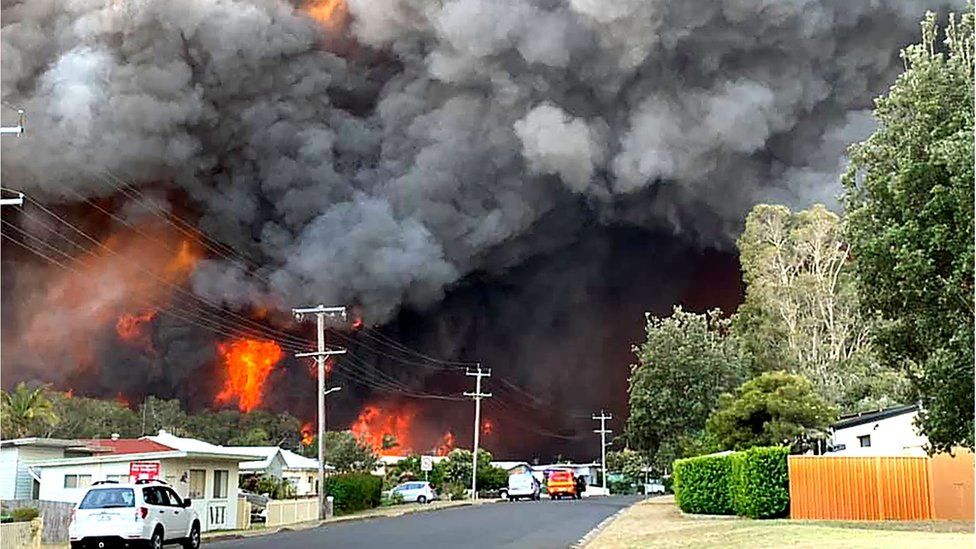Expert Suggestions on Bushfire Monitoring for Boosted Fire Security
In the world of bushfire administration, the importance of professional recommendations can not be overemphasized. From recognizing the subtleties of bushfire habits to carrying out sensible actions such as firebreaks and defensible areas, there exists a riches of expertise that can considerably improve fire protection efforts.
Understanding Bushfire Habits
To successfully mitigate the impact and take care of of bushfires, it is necessary to have an extensive understanding of bushfire actions. Bushfires are intricate natural phenomena affected by numerous variables such as weather condition problems, topography, fuel tons, and human tasks. Comprehending just how these elements communicate is critical in forecasting the actions of a bushfire, permitting far better planning and response methods.
One key facet of bushfire actions is fire spread. By examining past fire events and evaluating fire patterns, specialists can prepare for just how a bushfire might advance under certain conditions.
In addition, understanding ember attack, finding, and fire whirls is crucial in comprehending the complete extent of bushfire behavior. By diving into these intricacies of bushfire actions, authorities can enhance their preparedness and reaction abilities, inevitably lowering the influence of these destructive events.
Applying Firebreaks and Defensible Areas
Recognizing bushfire actions is fundamental for effectively implementing firebreaks and developing defensible spaces to enhance fire protection. Firebreaks are tactically placed gaps in greenery or various other flammable products that function as obstacles to stop the progress or slow of a bushfire. These can be all-natural attributes like rivers or roads, or manufactured clearings. Preserving these firebreaks with routine clearing of particles and plants is necessary to guarantee their effectiveness throughout a bushfire event.

Appropriately applying firebreaks and defensible areas needs meticulous preparation, normal upkeep, and community cooperation to guarantee the highest level of fire security for homes and lives in bushfire-prone locations.
Making Use Of Very Early Caution Equipments
Releasing innovative early caution systems is necessary for timely discovery and informing of potential bushfire dangers. By utilizing advanced innovations such as satellite tracking, climate sensors, and thermal imaging, authorities can properly check fire-prone locations and find ignition sources at the earliest phases. These systems can offer real-time data ablaze habits, intensity, and instructions, enabling timely decision-making and fast deployment of firefighting sources to the affected areas.
Very early warning systems also play an important duty in informing locals why not try this out and communities concerning putting in jeopardy bushfire threats. With automated alarms, text notifies, telephone call, and social media sites notifications, individuals can be swiftly informed about evacuation orders, risk-free shelter areas, and emergency procedures. This proactive method not just saves lives however likewise decreases residential property damage by ensuring that people have sufficient time to leave and protect their homes.
Developing Discharge Plans
Efficient discharge strategies are important for ensuring the safety and security of locals in bushfire-prone areas. Establishing well-balanced emptying strategies is vital in minimizing the risks postured by bushfires and safeguarding human life. These plans ought to be extensive, considering various variables such as the topography of the location, the density of plants, and the likely rate and instructions of the fire's spread.
When producing evacuation strategies, it is essential to establish clear emptying paths and setting up points where homeowners can collect securely. These routes must be regularly kept to guarantee accessibility throughout emergency situations. Additionally, interaction strategies have to be in place to alert homeowners of unavoidable risk and give clear instructions on evacuation procedures.
Collaboration in between local authorities, emergency solutions, and area participants is crucial in Full Article creating efficient emptying strategies. When a bushfire endangers the location, routine drills and exercises must be conducted to acquaint residents with the treatments and guarantee a swift and organized emptying (BAL Report). By prioritizing the advancement of robust evacuation plans, areas can improve their strength to bushfire emergencies and decrease the possible effect on residential or commercial properties and lives

Taking Part In Community Readiness
In the realm of bushfire administration, cultivating area readiness plays a critical function in fortifying the resilience of homeowners living in high-risk locations. Taking part in neighborhood readiness involves educating residents on bushfire dangers, advertising fire safety and security practices, and establishing emergency strategies collectively. By actively involving the neighborhood in preparedness initiatives, people become extra notified and equipped to take positive measures to secure their lives and homes during bushfire incidents.
Area preparedness campaigns typically consist of conducting fire drills, establishing interaction networks, and arranging training sessions ablaze suppression strategies. Additionally, encouraging cooperation among next-door neighbors to produce a cohesive support group can considerably improve the total preparedness level of a neighborhood. The likelihood of reducing damage and making reference sure security increases considerably. when homeowners are educated and geared up to react successfully to bushfires.
Verdict
To conclude, efficient bushfire administration needs a comprehensive understanding of fire habits, the application of firebreaks and defensible areas, the utilization of very early warning systems, the growth of emptying plans, and neighborhood engagement in preparedness initiatives. By incorporating these strategies, communities can improve their fire protection steps and minimize the influence of bushfires on both residential property and lives. Bushfire Management Plan. It is essential for all stakeholders to collaborate to create a much safer environment when faced with this natural catastrophe
To properly handle and minimize the impact of bushfires, it is essential to have a thorough understanding of bushfire behavior. By researching previous fire events and assessing fire patterns, specialists can anticipate exactly how a bushfire may proceed under particular conditions.Understanding bushfire behavior is foundational for properly applying firebreaks and creating defensible spaces to improve fire protection. Involving in community preparedness includes educating residents on bushfire risks, advertising fire safety and security practices, and establishing emergency strategies jointly.In final thought, effective bushfire monitoring calls for a comprehensive understanding of fire habits, the implementation of firebreaks and defensible areas, the utilization of very early warning systems, the growth of discharge strategies, and area interaction in readiness initiatives.